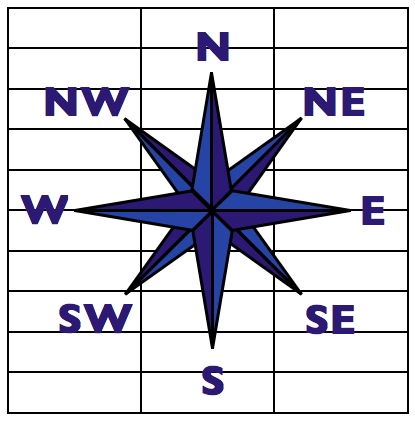In a recent NavList posting Jeremy provided a set of high-quality real-life observations that can be reduced to a celestial fix for his vessel at a specified moment in time. The application of Navigation Spreadsheets to this data set results in a very good fix, both by direct computation as well as by plotting.
The following table shows the computed ephemerides, corrected sextant altitudes, line-of position (LOP) characteristics for two choices of an assumed position (AP), and the accounting of vessel motion through dead reckoning (where the mini-spreadsheet time.xls was used to express the time intervals in decimal hours).
The fix at 19:00:00 local time (= 11:00:00 UT, since ZD = -8) is computed to be:
Latitude: N 8º 49.0′
Longitude: E 109º 45.2′
from the many_body_fix.xls spreadsheet:
This location is marked by a black square on the two subsequent plots.
The first plot uses the VSOP plotting sheet (scale 20 nautical miles per inch) with AP at N 9º and E 110º. The LOPs were drawn with a T-Plotter. The LOPs in this plot are not shifted by DR.

The second plot “zooms in” with the scale of 1 NM per centimeter to get a more accurate look. The reference AP is N 8º 50′ and E 109º 40′, which has been individually shifted for each observed celestial body along the vessel’s track (037) in order to account for the motion of the vessel.

The results are excellent, with all LOPs running within a mile of the computed fix.
In the above procedures all LOPs were treated as equally valid. The fact that there are pairs of LOPs that run nearly parallel to each other complicates matters somewhat. The GPS fix given by Jeremy:
Latitude: N 8º 48.4′
Longitude: 109º 45.0′
is recovered almost exactly (both by computation and by plotting) if only Jupiter, Rigel, and Fomalhaut LOPs are used.
For comparison, Jeremy’s position is marked by the square in Google Earth at the top of this post.
(first published on March 8, 2013)























